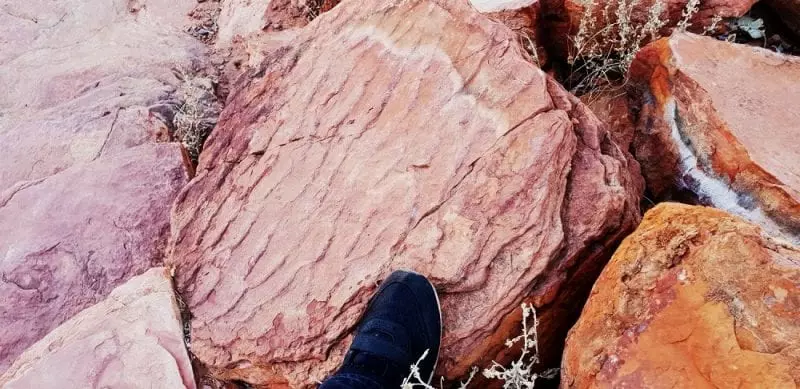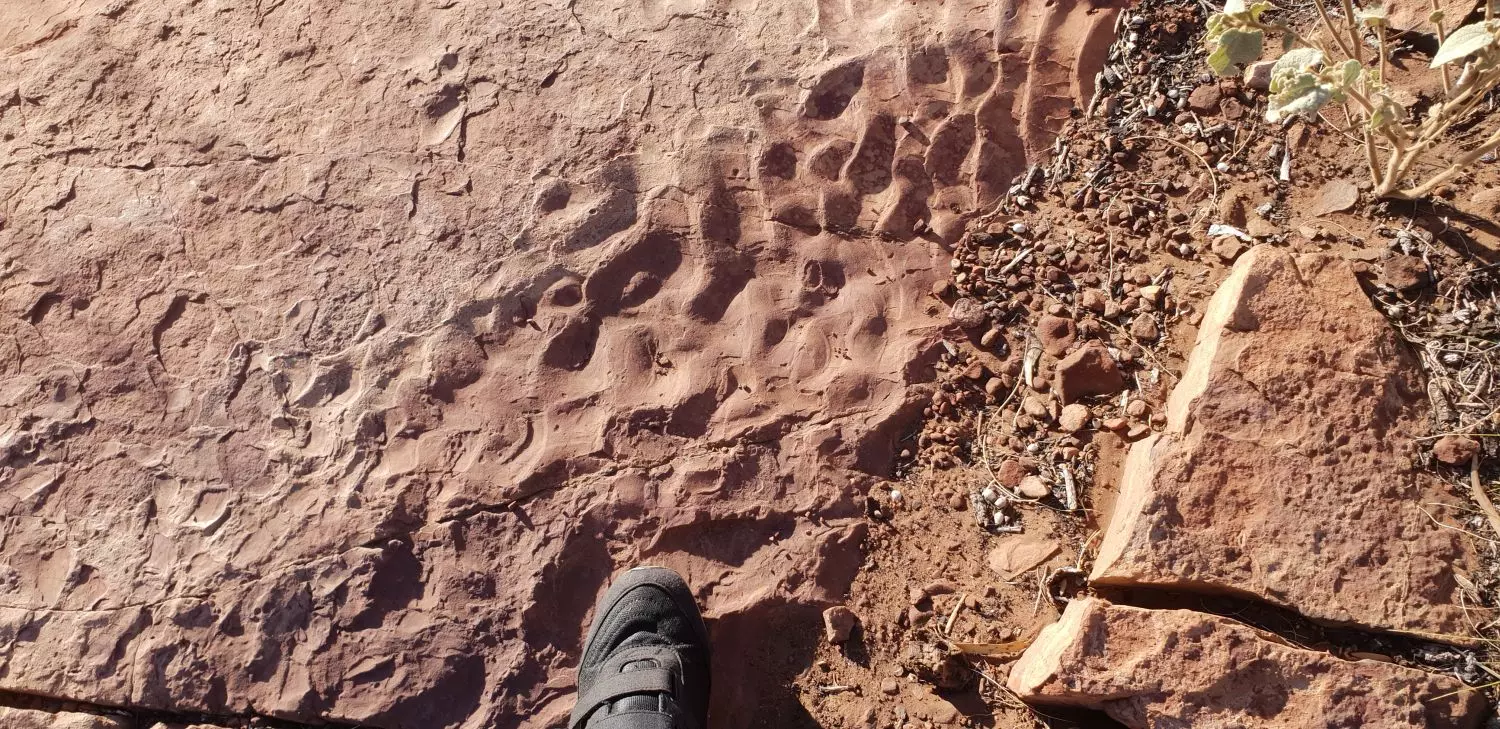[Originally published as What do the fossilized ripples preserved on sandstone layers on Kellys Knob, Kununurra, mean?]
Here are two examples of fossilized ripples preserved on the sandstone layers up Kellys Knob, just north of Kununurra, Western Australia. There are many examples on the surfaces of the rocks. These ripples indicate that the sediment was deposited from water and that it was of reasonably shallow depth. My foot is included in the pictures for scale.
The sandstone is fine grained and well cemented. Special conditions are needed to preserve ripples.
- There must be an abundant source of sand.
- The overlying layer of sand must be deposited on the underlying ripples quite quickly or the ripples would be destroyed.
- The current of water carrying the sand must deposit the sand and not scour the surface of the layer underneath.
- The water level must be continually increasing so that the sand will continue to build up, otherwise it would be eroded away.
- Plus, there must be an abundant source of cement to ‘glue’ the sand grains together and make the sediment harden into rock.

The global Flood was a one-off event in world history, and we find evidences of these sorts of unusual, special conditions all over the world.






See quite a bit of ripple stone on our travels in outback Australia. Wish we could be out there now.